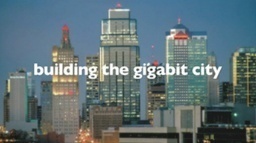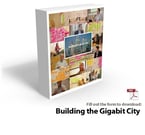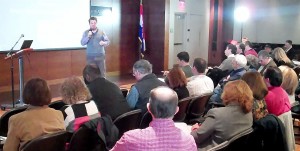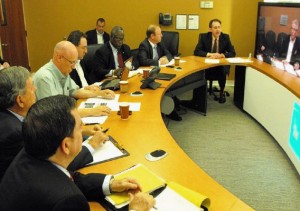 Google Fiber recently held an event at the Kansas City Public Library exploring the state of Internet access in Kansas City, a.k.a. the digital divide. When I was signing in, a Google rep at the registration desk noticed that I was from The Brainzooming Group and said, “Brainzooming. We use that Gigabit City report you produced all the time.” She was referring to the “Building the Gigabit City” report that we produced with the Social Media Club of Kansas City after an intensive brainstorming session at the very same library last fall, which involved more than 90 community leaders and interested citizens from around the Kansas City metro.
Google Fiber recently held an event at the Kansas City Public Library exploring the state of Internet access in Kansas City, a.k.a. the digital divide. When I was signing in, a Google rep at the registration desk noticed that I was from The Brainzooming Group and said, “Brainzooming. We use that Gigabit City report you produced all the time.” She was referring to the “Building the Gigabit City” report that we produced with the Social Media Club of Kansas City after an intensive brainstorming session at the very same library last fall, which involved more than 90 community leaders and interested citizens from around the Kansas City metro.
That was a reminder how ideas build upon one another and that answers often must percolate a while—and be addressed from different perspectives—before they move forward toward implementation.
The Digital Divide in the Gigabit City
One focus of the “Building the Gigabit City” report was the urban core in Kansas City. Many of the participants in the urban core brainstorming session group were concerned about the digital divide. The question of whether urban core residents, particularly those who are older and with fewer economic resources, might be left even further behind once ultra-high speed Internet came to town was a particular focus in the brainstorming session. The digital divide has also been a recurrent theme in the work of the Mayors’ Bi-State Innovation Team and is reflected in its playbook.
The Google digital divide event provided additional data points, including an excellent take from John Horrigan of TechNet on why we should be concerned about the digital divide even if we are on the other side of it. In his talk, John Horrigan highlighted multiple impacts of the digital divide:
- Increased costs to society of the digital divide
- Greater challenges for people to gain access to jobs
- Negative educational outcomes resulting from the digital divide
- Limits on our ability to deal with the increasing cost of healthcare in the US.
Horrigan also made the point that while mobile access to the Internet via smartphones does bridge part of the digital divide gap, it falls short in both quality of experience (because of the limiting nature of the small screen) and in depth of experience (because of increasingly onerous data caps and throttle).
At the Google digital divide event, Google unveiled some excellent research that not only quantified the the size and the geography of the digital divide, but also drew some conclusions about why it exists, and offered insights into how the digital divide might be bridged.
Addressing the Digital Divide
The reality of the digital divide is a reminder that truly profound innovation and creativity carries not only the burden of producing breakthrough ideas, but also of producing the path by which people can use those ideas in a broad and sustainable manner. –Barrett Sydnor
If you enjoyed this article, subscribe to the free Brainzooming blog email updates.
 How can ultra high-speed Internet speeds drive innovation? “Building the Gigabit City: Brainzooming a Google Fiber Roadmap,” a free 120-page report, shares 60 business opportunities for driving innovation and hundreds of ideas for education, healthcare, jobs, community activities, the digital divide, and more. Download this exclusive Google Fiber report sponsored by Social Media Club of Kansas City and The Brainzooming Group addressing how ultra high-speed Internet can spur economic development, growth, and improved lifestyles globally.
How can ultra high-speed Internet speeds drive innovation? “Building the Gigabit City: Brainzooming a Google Fiber Roadmap,” a free 120-page report, shares 60 business opportunities for driving innovation and hundreds of ideas for education, healthcare, jobs, community activities, the digital divide, and more. Download this exclusive Google Fiber report sponsored by Social Media Club of Kansas City and The Brainzooming Group addressing how ultra high-speed Internet can spur economic development, growth, and improved lifestyles globally.



